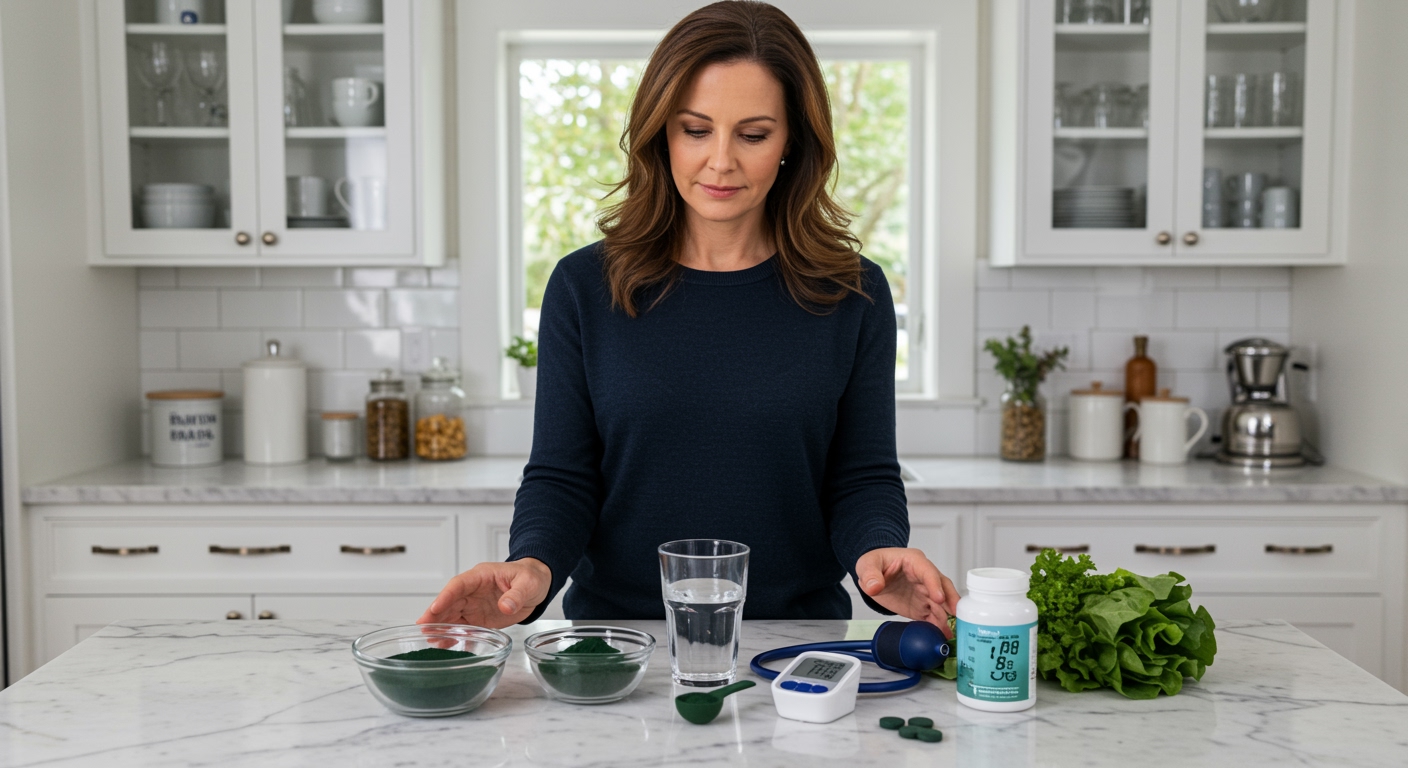✪ Key Takeaway: Spinach contains nutrients that may help stabilize blood pressure, but it cannot cure hypotension alone.
Introduction
Your doctor just told you that your blood pressure is too low, and now you are wondering if spinach can help.
Many people with hypotension search for natural solutions, hoping that simple dietary changes might solve their problem without medication.
Hi, I am Abdur, your nutrition coach, and today I am going to explain exactly how spinach affects low blood pressure and whether it can truly make a difference.
What Makes Spinach Special for Blood Pressure?
Spinach contains several nutrients that directly impact your cardiovascular system.
The most important component is nitrates, which your body converts into nitric oxide.
Nitric oxide helps your blood vessels relax and improves blood flow throughout your body.
This leafy green also provides potassium, magnesium, and folate, which all support healthy blood pressure regulation.
However, these nutrients typically help people with high blood pressure more than those with low blood pressure.
The relaxing effect on blood vessels might actually make hypotension worse in some cases.
✪ Fact: One cup of cooked spinach contains 839 mg of potassium, which is 18% of your daily needs.
Can Spinach Actually Raise Your Blood Pressure?
The answer is not straightforward because spinach affects blood pressure in complex ways.
While spinach contains sodium naturally, the amount is relatively small compared to processed foods.
One cup of raw spinach contains only about 24 mg of sodium, which is not enough to significantly raise blood pressure.
The potassium content in spinach actually counteracts sodium effects by helping your kidneys remove excess salt.
However, spinach does provide iron and other minerals that support healthy blood volume.
When your blood volume is adequate, your blood pressure tends to be more stable and less likely to drop dangerously low.
✪ Pro Tip: Cook spinach with a pinch of sea salt to add natural sodium that may help with low blood pressure.
How Should People With Hypotension Eat Spinach?
If you have low blood pressure, you need to be strategic about how you consume spinach.
Raw spinach in large amounts might not be the best choice because it contains oxalates that can interfere with mineral absorption.
Cooking spinach breaks down oxalates and makes the nutrients more available to your body.
Try sautéing spinach with garlic and a small amount of salt to add flavor and sodium.
You can also combine spinach with foods that naturally contain more sodium, like cheese or olives.
The key is to eat spinach as part of a balanced meal rather than consuming it alone in large quantities.
✪ Note: Always consult your doctor before making significant dietary changes if you have diagnosed hypotension.
What Other Foods Work Better for Low Blood Pressure?
While spinach has some benefits, other foods might be more effective for managing hypotension.
Foods with higher sodium content, like pickles, olives, and cheese, can help raise blood pressure more directly.
Caffeine from coffee or tea provides a temporary boost in blood pressure that many people find helpful.
Complex carbohydrates like oats and quinoa help maintain steady blood sugar levels, which supports stable blood pressure.
Lean proteins such as chicken, fish, and eggs provide amino acids that support healthy blood vessel function.
The most important strategy is eating regular meals and staying hydrated throughout the day.
✪ Pro Tip: Drink water with a pinch of sea salt first thing in the morning to help stabilize blood pressure.
The Bottom Line
Spinach can be part of a healthy diet for people with low blood pressure, but it is not a magic solution.
Good nutrition is like building a house – you need many different materials, not just one type of brick.
I would love to hear about your experience with spinach and blood pressure in the comments below, and feel free to ask any questions you might have.
References
At NutritionCrown, we use quality and credible sources to ensure our content is accurate and trustworthy. Below are the sources referenced in creating this article:
- Healthline: Low Blood Pressure Diet
- PMC: Nitrate and Nitrite in Foods and the Diet
- PubMed: Spinach Supplementation and Exercise
- Medical News Today: Spinach: Health Benefits and Nutritional Value





